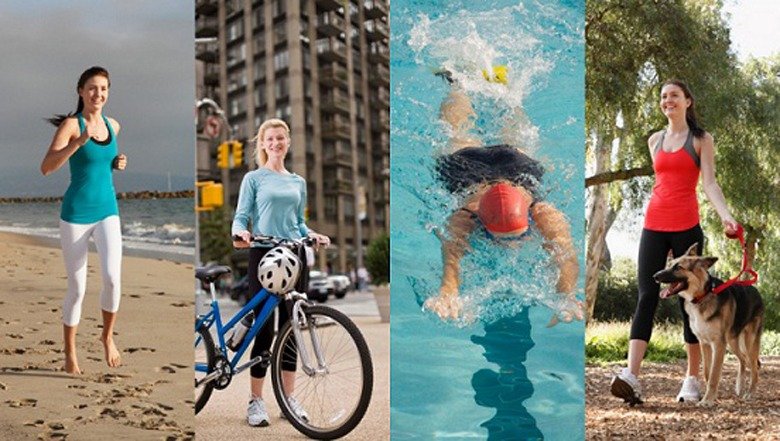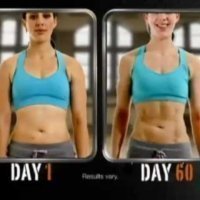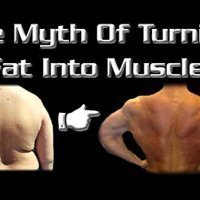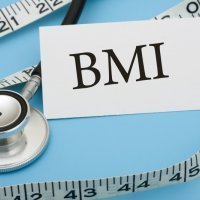Facts you should know about types of cardio
Recently, lots of misconceptions have appeared about cardiovascular exercises. Some people say that cardio should be done in the morning, while others say that it is better to exercise in the evening. Some of us believe that it is enough to run 20 minutes a day while others insist on 2-hours training. There are people who believe that cardio leads to losing muscles and thus refuse it at all. Someone proposes to limit cardio to 5-10 minutes a day with an emphasis on intensity. So let's find out some answers and smart tips on this subject.
What can you get from cardiovascular exercises?
As it is clear from the very name, cardiovascular exercises strengthen the cardiovascular system. But at the same time cardio is appreciated for expanding lung volume, developing endurance, reducing high cholesterol and high blood pressure, mitigating the risk of heart attack and diabetes, improving overall health, enhancing sleep and easing stress. Simultaneously, lots of people resort to cardiovascular exercises hoping to lose weight and it is really effective in this respect. While power exercises strengthen muscles, help to build muscle mass and to get beautiful body shape, cardio allows to burn excessive body fat. However, to achieve this effect you need to correctly arrange trainings.
When and how long?
Classic cardio can be divided into 4 types:
- morning trainings on an empty stomach;
- morning trainings after breakfast;
- evening cardio;
- evening cardio after power exercises.
Depending on a type these trainings differ in duration, which is determined by presence of glycogen in muscles. Glycogen can be described as a fast fuel in muscles which is ready for instant use. If you would run 100 m sprint, you wouldn’t burn fat depot, but you would spend glycogen. In order to burn fat it is necessary to deplete glycogen and that will open a reserve source of energy which is fat. While training you can feel this moment when it seems that your body has become heavier.
It is possible to achieve glycogen depletion for burning fat in three ways:
- by doing cardiovascular exercises for a long period of time (traditionally, it is believed that fat begins to burn only in 20-25 minutes after starting cardio);
- by doing cardio immediately after power exercises (when the whole of glycogen is used during strength training);
- by doing cardio in the morning on an empty stomach (in the mornings glycogen stores are depleted).
Each of these solutions has its own pros and cons, therefore there is no simple advice about when it is better to train since it depends on your schedule and other preferences. Similarly, the answer to the question about the duration of cardio will depend on a chosen type of training. It is generally recommended to exercise 2-3 days a week starting training with 5-10 minute warm-up and then gradually increasing intensity. It is necessary to finish every drill with stretching the muscles you've worked on with the aim to relax them and keep muscles supple.
What to choose?
There are quite a lot of types of cardio activity for every taste, but we’ll examine the most common of them taking into account their effect on the body of an average person who weights 75 kg.
- Walking. This is the easiest form of cardiovascular exercises allowing to burn 238 calories per hour while walking with the speed of 5 km/h.
- Running. Studies show that regular jogging burns for about 560 calories an hour, if you jog with the speed of 8 km/h. Running can be even more effective, if you run uphill.
- Biking. Cycling strengthens hips, legs, quads and tonifies a body. You can burn 410 calories per hour at the speed of 20 km/h.
- Kickboxing. This combination of fitness and boxing is the latest trend in the world fitness industry which is extremely popular among males. Kickboxing burns calories (up to 350 calories in 30 minutes) and also strengthens a body.
- Swimming. This type of cardiovascular exercises allows strengthening the whole body too. Freestyle (the crawl) is the best option and the easiest way to start swimming. In just 30 minutes you'll burn up to 350 calories. If you’d like to burn more turn to the butterfly since this stroke ensures loosing 400 calories in half an hour.
- Jumping rope. It's a fun and it’s effective. However, this high intensity cardio is not recommended for some people since there is a heavy load on joints. But if you choose this type of cardio, you’ll be able to burn 350 calories in just 30 minutes of jumping.
- Water fitness. Currently, water aerobics is also extremely popular but mostly among females. 30 minutes training in a swimming pool allows you to get rid of about 150 calories.
Whatever kind of cardio you choose, remember that regular training and sense of purpose are a must for achieving success.








